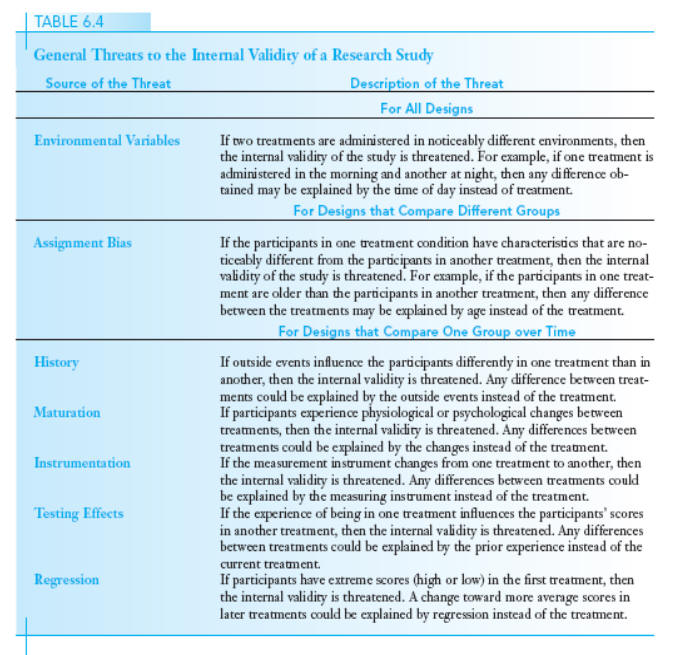
Psy 330 McBride Ch. 4
Measurement Issues in Research
Test your knowledge about basic design
I. Scales of Measurement
Arbitrary zero point---zero does NOT mean a complete absence of the attribute being measured (e.g., °F)
Equal, ordered categories
The value 0 means a complete absence of the variable being measured (e.g., height in inches, weight in lbs.)

II. Validity
Face validity—Does the measurement technique look like it measures the variable that it claims to measure?
Construct Validity—Do measurements of a variable behave in exactly the same way as the variable itself?
III. Validity and Sources of Bias
How well does the study answer the question it was intended to answer?
**A researcher's ultimate goal: “This is what happened, and this is what it means.” Any factor that raises doubts about the research results or about the interpretation of the results is a THREAT TO VALIDITY.
Extent to which other causes are ruled out—extent to which the difference in behavior (the DV) can unambiguously be attributed to the manipulation (the level of the IV received).
B. External Validity
Extent to which we can generalize the results of a research study to people, settings, times, measures, and characteristics other than those used in that study.
A cold, hard fact:
It is impossible for a study to totally eliminate all threats to validity. Each study is a set of decisions and compromises. Often there's a trade-off between internal and external validity. Therefore, a single study can never "prove" anything on its own. We need to get converging evidence. Also, we must always be critical consumers of research and make our own decisions about validity and quality of the research.
Threats to Validity
Extraneous variables vs. Confounding variables
Extraneous variable--any variable in a study other than the two variables of
interest
Confounding variable--an extraneous variable (usually unmonitored) that is
allowed to change systematically along with the two variables being
studied...prevents you from establishing a causal link between your two
variables of interest

control by holding constant
control by matching across conditions
control by randomization
